Showdown: 2022 Aprilia Tuareg 660 Vs. Yamaha Tenere 700

Middleweight adventure bikes duke it out on a 2,000 mile tour
As we motored slaunchways across Utah, the late daylight stretched our shadows and cast golden hues against the tall canyon walls, further accentuating the contrast between the rust colored ancient seabeds peppered with lush green juniper and muted sage. The lavender sky over Bryce faded as we continued westward on Hwy 12. Refusing to pack a second visor for my Shoei Hornet X2, I lifted the dark smoke shield as I led our crew into the dark dense forest, keeping my line of sight just above the Ténéré’s windscreen in an attempt to protect my peepers from the onslaught of kamikaze insects. In a further showing of stubbornity, I refused to roll back off the throttle while the only bit of light left – aside from what the Ténéré’s quite ample quad headlight offered – was a thick crimson band at the horizon, the bottom punctured by spire-like tree tops.
Bugs bounced off my face and every now and then I’d notice a deer grazing on the side of the road caught just for an instant in my periphery, a reminder of the imminent danger. It had been a long day, one that started with 40 miles of off-road before we got to our itinerary’s previously scheduled 400-plus miles on pavement. Despite the darkness, the compounded weariness from a week on the road with my boss, and the sweat-soaked, then dried, then soaked again, condition of my gear, I thought to myself, I could go for another week or so.
2022 Aprilia Tuareg 660 vs. Yamaha Ténéré 700
2022 Aprilia Tuareg 660
+ Highs
- The level of refinement and tech justify the price
- Great wind protection
- Electronics open the Tuareg to a wide range of riders
– Sighs
- Not much low end
- Weak front brake
- A bit of a heat around the lower legs
2022 Yamaha Ténéré 700
+ Highs
- Great low end punch
- Plenty of dealer network
- Tank shape makes it easy to see where the front wheel is placed
– Sighs
- Requires more effort to ride smoothly
- Deceptively girthy
- The seat gets old pretty quick
All of you folks who remember the days when the bikes we now call middleweights were plenty for touring will likely echo my sentiment, but the idea of folks questioning the validity of touring on machines like the Aprilia Tuareg and Yamaha Ténéré has always puzzled me. The capability in terms of what we now call middleweight adventure motorcycles is immense. For me, the off-road ability combined with highway prowess is what does it. For folks just getting into such things, like Evans, the potential of doing an actual adventure tour involving full days of off-road riding bracketed by long days of pavement strafing, and not having to pilot a machine that put his inseam to the test, weighed 500-plus pounds, and made entirely more power than necessary, eased his anxiety for the unknown off-road sections.
As always, there are pros and cons to open-class adventure machines and the middleweights too, but we decided we were going to set out on an actual tour starting at Revzilla’s Get On! ADV Fest in the Black Hills of South Dakota, culminating at our homes in southern California. Over six days, we’d navigate our way through hundreds of miles of backroads and small towns, two sections of Backcountry Discovery Routes – one in Wyoming and one in Utah – and spend our time split between camping and hotels to stave off some of the stank that develops on a long summer ride. We’d see just how grueling traveling on middleweight adventure bikes would be, or not.
We three – Sean Matic, Evans Brasfield, and myself – would saddle up on two Aprilia Tuaregs and one Yamaha Ténéré. Sean’s Tuareg – the video mule – was complete with Aprilia’s hard panniers while Evans and I loaded down the other Tuareg and Ténéré with Wolfman soft luggage containing everything that the three of us would need for camping, hoteling, charging and hopefully not fixing.
Seeing the two machines parked outside our “cabin” at the Buffalo Chip (a wood shed, at least it had an air conditioner), many a passing attendee of the ADV Fest in progress justified our idea saying, “That’s the comparison we want to see!”
Feeling validated, we hit the road to see what conclusions we might come to over what our own track-based editor Troy S. referred to as a “manly itinerary.” The following events are what transpired.
Parallel Twins
But first, a quick look at our competitors. The new Aprilia Tuareg 660 and the now well-seated Yamaha Ténéré 700 are what we believe to be two of the most closely matched middleweight adventure machines on the market at this point. Yes, the Aprilia in this test carries a $2,300 premium compared to the $10,299 Ténéré, but it does bring with it a host of electronic upgrades that make the extra dough more palatable, but we’ll get further into that in a bit. Let’s have a look at what makes up the foundation of these cycles motor.
2022 Aprilia Tuareg 660 Review – First Ride
2020 Yamaha Ténéré 700 Review – First Ride
Both bikes are powered by Parallel Twin engines featuring a 270-degree crank, DOHC, and four valves per cylinder. The 659cc Aprilia motor boasts a slightly higher compression ratio at 13.5:1 versus the 689cc Yamaha’s 11.5:1. Bores are similar with the Ténéré making up most of its displacement advantage in the stroke. On the Rottweiler Performance Dynojet, the two bikes hit peak performance numbers at nearly identical rpm. The Aprilia ekes out six more horses at 9,200 rpm while the Ténéré has a slight torque advantage from low rpm, though both hit their peak torque figures in the mid-range.
In the suspension department, the similarities continue with both bikes using fully adjustable 43mm KYB forks and linkage-type KYB shocks. The Aprilia however, offers 9.4 inches of travel out of its legs while the Yamaha is working with 8.3 inches fore and 7.9 inches aft.
All three of the Tuareg’s braking discs are larger, but Brembo components are found on both bikes. ABS can also be disabled on both machines, though the Ténéré will revert to the street setting whether the bike is shut off with the key or the kill switch. The Tuareg has three ABS settings: 1, 2, and Off and will hold whichever ABS setting (including Off) when switched off with the kill switch. If ABS is entirely disabled on the Tuareg, switching the key off at the ignition will cause ABS to revert to the off-road setting (setting 1) which has a lower intervention at the front wheel and disables the function at the rear wheel.
Switchable ABS is about all the Yamaha offers in terms of rider aids, which many folks out there are a-okay with. The Aprilia, however, gets the APRC functionality similar to what we’ve seen on the other 660 models to date allowing adjustment of engine mapping, engine braking, traction control, and ABS in all four of its modes (ABS can only be disabled in Off-road mode).
Both machines are rolling on 21/18-inch wheel combinations wrapped with the same excellent Pirelli Scorpion Rally STRs. The only difference here are the rim-mounted spokes found on the Tuareg’s hoops allowing the Aprilia to use tubeless tires. The Ténéré’s standard center-mounted spoke design hints at the Yamaha’s tube-based setup. Pros and cons to both, as always.
Back to the road.
2,000 miles and 6 days
I’m such a whiner when it comes to humidity these days. I mean, it was a large factor in my moving from the Midwest, where I spent 19 years dealing with it. So, naturally, when I first hopped on board the Aprilia and felt a large bubble of stagnant heat keeping the air from my feet to knees nice (moist) and warm on a 95-degree night in 10000% humidity-stricken Sturgis, I took quick notice. It seems Evans doesn’t have much feeling in his lower extremities these days:
While I felt the engine’s bubble of heat around my lower legs, it never bothered me as much as it seemed to affect Ryan. Maybe this is a side effect of all those years I spent on cruisers early in my career. There’s hot, and there’s HOT. —Mr. Brasfield
I must admit that my first ride was in Red Wing boots and Levis which let the heat seep through a bit easier. Once I had donned riding pants, knee guards, and moto boots, it wasn’t nearly as oppressive. Honestly, there were only a few other times over the course of 2000 miles that I gave it much thought after my first ride. I will say though, that I never had an issue with the Ténéré in terms of heat.
Once we had wrangled our Tuaregs away from eager demo riders, we were able to get the Wolfman luggage situated on Evans’ and my rides. My pack ended up weighing in right around 37 pounds total with the three Wolfman bags and base. Evans’ setup on the Ténéré weighed about 50 lbs, a fair amount more, but he was packing for two, plus some. Thankfully, both bikes have easily accessible knobs for dialing in preload at the shock to accommodate the extra weight of my things and all of Evans’ shoes.
Leaving the Buffalo Chip heading south we got into some twisty roads that snaked their way through the Black Hills National Forest. We avoided that mountain with those old dead guys carved in it, and judging by the traffic as we inched nearer, it was a good idea.
Well into some of the tighter tight roads with speed limits we disregarded, “Yes, we’re speeding! For science!”, we were reminded of our 21-inch front wheels, but moreso, how impressively the Pirelli STRs work on pavement. It was no problem hustling the two machines loaded up with gear through the corners. I did end up dialing in a bit more preload to help keep things more even keel on the Ténéré.
Our fun start to the ride also set the scene for a few other opinions that would last for the remainder of the trip, some were molded and massaged by the extra time and miles, while others remained steadfast in our minds.
While not an issue off-road, we didn’t need much time to surmise that the Ténéré would be getting the nod in the braking department:
Even though the calipers have Brembo emblazoned on them, the Tuareg’s binders left a lot to be desired. Now is when I insert the tried and (often) true comment about how a change in brake pads might liven up the Aprilia’s stopping power. —EvB
Also, despite these two machines both using Parallel Twins with similar specs, they make power quite differently. The dyno chart hints at the difference, but jumping back and forth between the two tells the real story. We’ve put a good amount of miles on Ténéré 700s in the past few years, and an even gooder amount on machines with the CP2 engine. The torquey low-end power that the Yamaha P Twin puts out is addicting. It’s fun off-road, and as we experienced at the beginning of our trip, it makes blasting through tight hairpins effortless as the power is always right there waiting to slingshot you forward, provided you don’t go looking for it too far into the rpm range.
The Aprilia’s mill basically makes its power in opposite fashion. It doesn’t have nearly the low-end punch that the T7 has but makes up for it with a strong mid-range that climbs to gap the Yamaha by six horsepower up top. Aprilia says the Tuareg’s 660 setup has been certified for ADV use with different length intake ducts, different cams, a new exhaust system, and 10% lower gearing.
With neither Evans nor I having thrown a leg over the Tuareg prior to this trip, we had been curious how it would compare.
Going into this tour, the Tuareg’s engine was the big question mark. I knew it had the top end power to be a hoot on paved roads, but would that top end bias affect slow going in technical off-road sections. As it turns out, the engine was able to motor over pretty much everything I was willing to ride on. While I did have to slip the clutch a bit more than on the Ténéré, I never found it to be a problem. In fact, having the electronic aids, like traction control, made me feel much more comfortable on the higher-speed sections, too. —EB
I was beginning to feel the same way, but it took me longer to be convinced. Also, both bikes use cable-actuated clutches, but we both felt the Aprilia’s had a bit lighter pull at the lever.
Our first off-road day was along the Wyoming Backcountry Discovery Route. We rolled into camp the evening prior and in the morning set off to a fairly tame day of riding large gravel roads through the gorgeous Medicine Bow-Routt National Forest in southeastern Wyoming. To break up the monotony, we took an out-and-back detour to the top of Kennaday Peak which reaches nearly 11,000 ft up into the sky. That trip provided us with some nice switchbacks, excellent views, and a few babyheads to bounce around over.
I spent most of my time standing during our off-road portions, and as I mentioned in my initial Ténéré 700 review, I was instantly reminded of the Yamaha’s surprisingly thicc feel between the knees. “Deceptively girthy,” I called it. The Ténéré looks like this slim, svelte motorcycle, and in many ways it is. As tested, the machine we used for this ride tipped the scales at 454 lbs. – six pounds lighter than the Tuareg. The problem is that the side panels next to the seat stick out slightly further causing your legs to bow out just enough to make it annoying while standing, which also makes its 34.6-inch seat height feel even taller. Try to move your way up the tank to put more weight over the front tire and the feeling is worsened as the tank continues to thicken toward the front of the machine. And then there is the clutch cover that pushes your right boot out causing some contortion to get your toe back in toward the rear brake pedal.
It’s not just me either! Evans agreed:
I have to concur with Ryan’s assessment of the Ténéré tank’s girth. It made it more of a challenge for me to get my weight forward when moving around on the bike in the dirt.
Despite the difference in height and inseam, Evans and I both preferred the Aprilia’s ergonomics. The wider handlebar also feels much closer to the rider, the slim feeling at the knees is appreciated while seated or standing, and the perfectly neutral footpeg placement helped us both feel more in command of the Tuareg in any situation.
On the Yamaha, while sitting in the middle of the seat, my arms are nearly locked out at the elbows. While standing, this wasn’t an issue at all. Oh, and then there’s the seat… or what Evans referred to as:
The ancient torture device that Yamaha has the temerity to call a seat. I spent one of my freeway stints on the Yamaha listing how many aftermarket seat companies I could think of. Need I say more? —E. Brasfield
Ah, the things you notice when you actually put down some serious time on a motorcycle. The Aprilia quickly became the place to be for logging miles. Cruise control as standard, a much more pleasant seat, and slightly better wind protection? Yes, please. Not to mention I didn’t have to deal with that large Wolfman bag with all of Evans’ shoes strapped to the back of the Ténéré.
While neither bike had bad wind protection, the Tuareg’s larger windscreen did a better job of creating a relatively still pocket of air, though not so still as to get hot in warmer temperatures. Overall, when it comes to creature comforts, the Tuareg wins, hands down. The seat is significantly better than the Ténéré’s which, after 100 miles or so, borders on egregious. —Evans P Brascannons
He continues…
Although I’ve read complaints online from riders who think the Ténéré’s wind protection is really bad, I have to disagree. While I preferred the Tuareg’s, the T7’s was fine, if not quite as expansive. I felt none of the buffeting around the helmet that I’d read about. (For the record, I’m 5’ 11”.)
Ditto, except that I’m 5’8”.
Once we got into our second off-road day on the Utah BDR, I got to do some extracurricular exploring in search of the perfect campsite. Low speed crawling over somewhat large embedded rock is exactly the kind of thing that makes one appreciate the CP2’s strong low end torque. You have the power right there when you need it, even if it needs to be smoothed out at times with the clutch, and at low speeds, the suspension gets the job done just fine.
The Yamaha’s engine does have a bit more on/off throttle abruptness though. This, combined with the lack of a slipper clutch and heavier engine braking, can make the Ténéré feel more taxing to ride in certain conditions, if just slightly.
Evans took note as well:
The engine braking control on the Tuareg made it significantly easier to manage on-off-throttle transitions in technical sections. A couple times, poor throttle control on my part on the Ténéré pitched me forward over the bars at an inopportune time.
Not all the way over though, thankfully.
Our time in slightly more technical off-road situations made me appreciate the design of the Ténéré. Despite its thiccness, you don’t have the typical gas tank shape jutting out on the sides, which makes it easy to see exactly where you’re placing the front wheel while doing really low-speed technical work. While the Aprilia does have that typical “gas tank” shape, its 4.8 gallons of fuel is actually located fairly low in the chassis, letting its airbox deliver its melodious honk to you close up top.
It was the next day on our way out of one of the most scenic campsites I’ve ever stayed at that I noticed just how approachable the Tuareg’s power delivery was on the slower, bumpy bits. In other faster sections on larger gravel roads, I had been keeping the Tuareg low in the rpm range, which meant if I wanted to step out the rear quickly to sure up my direction, I was met with very gradual forward momentum. This lack of low-end punch was actually helpful in slower bumpy sections and the smooth throttle made rolling over obstacles in a controlled manner without having to slip the clutch quite pleasant.
I had enjoyed the punch of power from the Ténéré on our way down, but that’s because I don’t mind the times when it can be a handful, and I really appreciate the moments when I can exploit it. Despite the Tuareg feeling fairly soft off the bottom end, it doesn’t lack the power to keep you moving forward, and for newer riders, it will probably be a lot easier to manage delivering a smoother and more refined feeling where the Ténéré feels a little more rowdy.
EB came to this conclusion:
Given the extended experience I had on the Ténéré, I went into this Showdown thinking it was the one to beat. It has so many likable qualities for a rider who is transitioning to adventure riding. Yamaha’s CP2 engine has won fans repeatedly over the years, and the Ténéré is no different. With its power available down low, the T7 can crawl over just about any obstacle without stalling, though really talented riders, like myself, can still do it multiple times if we put our minds to it. On the road, the Parallel Twin, with its slick-shifting transmission, loves being flogged in the twisties. However, when ridden back-to-back with the Tuareg, the Ténéré feels less polished. An example of this is the on-off throttle abruptness at low rpm.
The Aprilia Tuareg’s tech pack combined with the refinement of the engine also helps the bike become more suitable for a wide range of riders. As the more off-road focused rider in our test, I can appreciate the simplicity of the Yamaha and the ability to dial in the Aprilia’s settings. Best of all is that the Aprilia can be turned off with the key and/or kill switch and return your settings (aside from ABS all the way off, which we mentioned before).
But some of those rider aids on the Aprilia are what makes the bike more approachable and easier for folks to ride:
ABS control is much better with the Tuareg. As a predominantly street-focused rider, my first instinct is to go with lots of front brake. Like learning a second language, I need to translate my street skills through a dirt filter before applying them. Front ABS (with disabled rear) – i.e., Off-road ABS mode on the Aprilia – helps me when I make that translation poorly. —EB
It softens the learning curve. Evans and I (and Sean) were linked up with the new Cardo Edge units during our trip (for better or worse) and we discussed this a few times. I likened it to our first day on the Wyoming BDR. The route is beautiful and takes you on some fairly tame large dirt and gravel roads with options to add more difficult routes along the way. It’s a safe, well-packaged self-ride experience that the folks over there have put together. The routes vary in difficulty by day and region, but if you do some research, you can find a ride that is bound to get you more excited about adventure riding without getting you in over your head the first time.
This is how the Aprilia felt to both of us. Evans mentioned he preferred being able to keep the front ABS on and dial the traction control settings and engine map in for the specific terrain we were on at the moment. I was thankful that I could turn everything off if I felt it necessary. Hooray versatility.
For the moderate speeds that we kept during our off-road days, the suspension on both bikes felt pretty comparable to me. The Ténéré actually felt a bit stiffer through the stroke when off-road which I preferred, but for our speeds during the trip on road and off, I found them to work fairly similarly.
Evans preferred the Tuareg’s set up overall:
While both of these bikes, with their long-travel suspension, pitch forward under hard braking, I found the Tuareg to be the most balanced in its suspension settings for the street and dirt. On the open road, the suspension tends to absorb the small, harsh bumps, like highway seams, much better without having that translate into a mushy ride off road.
And had this to say about the Ténéré:
The Ténéré’s suspension works well in most situations, but it has a tendency initially to be a bit harsh over smaller bumps in the pavement at highway speed. In one section of particularly rough pavement, at the end of a long day carrying 15 lb. of camera gear on my back, the suspension actually had me wincing over some bumps. Not fun.
The interface on both bikes is easy to use, but obviously the Tuareg gives you a lot more to look through.
With the Tuareg, you do spend about $2,300 more, but I feel you get your money’s worth with adjustable ABS, cruise control, engine-braking control, ride modes, and traction control. While I understand that the Ténéré’s instrumentation was simple by design, I preferred the Tuareg’s TFT and the wealth of information it could provide at a single glance versus flipping through one-line displays with my thumb. —EB
Valve check intervals are suggested every 26,600 miles on the Yamaha to the Tuareg’s 12,400, and chances are, if you’re not going to do it yourself, you’re more likely to have a Yamaha dealership or two nearby.
Living in a major metropolitan area, there are two Aprilia dealers within 15 miles of me, but that can’t be said for large swaths of these United States. So, if a local dealer network (or having one along your route on an extended tour) is a concern for you, the availability of Yamaha dealerships nationwide is a major incentive for buying the Ténéré. I’ve been fortunate enough to never be stranded far from home, so this isn’t a huge fear of mine. However, that doesn’t make it any less valid a concern. —Evans
We burned plenty of dino juice on this trip so we came back with pretty well averaged mpg numbers, though the weather and terrain made them vary widely. The Ténéré came back with an average of 50.5 mpg from its 4.2-gallon tank, hitting a low of 39 and high of 57.1 mpg, while the Tuareg returned a 50.1 mpg average with 40.9 at the low end and 56.4 on its most fuel efficient tank.
It’s not so bad
We decided after dealing with temperatures well into the triple digits during our ride, that the last stint, the one that would have us bisecting Death Valley and the Mojave Preserve, was best done under the cover of early dawn. We rolled into our hotel in Cedar City late and dazed from our long dance through the darkness of the mountain road that had dropped us into town.
It was a Friday and you could tell by the young Culver employees’ jubilant attitude that they were close to their shifts ending and ready to GTFO. After some butter burgers we rolled across the street to the hotel to check in.
After a brief check-in we unloaded the bikes, acknowledged that we would see each other in a few hours and went to our rooms to prepare for a 4:00 am departure. It was 95 degrees before the sun came up as we blasted through the Virgin River Gorge. Looking back, most of that morning felt like a blur until the sun began to ignite the desert sky into a pretty spectacular sunrise.
The Final Countdown
You know how, when you have to go to the bathroom, once you get closer to said bathroom, you feel yourself really having to go? That’s how I felt as traffic became more dense as we closed in on the Los Angeles basin – not in my loins, but at my right wrist. As we got closer, I had less and less patience for traffic and rejoiced at one of the simple pleasures of riding motorcycles in California – lane sharing! And once I started, I was off. Sean and Evans slowly disappeared in my rearview and fell out of intercom range. We all get along just fine, but no one felt the need to stay in formation at this point.
By the end of the trip, I wouldn’t have hesitated to keep on trucking along on these bikes. There isn’t any reason you shouldn’t consider touring on a bike this size. But, after logging so many miles over so much varying terrain, the Aprilia Tuareg stood out as the bike Evans and I would rather be on for a big ol’ ADV tour like this one. Of course, more off-road would have been nice, but this is just the way the cookie crumbled. Would additional sections of off-road have swayed my opinion of the Ténéré side by side with the Tuareg? Maybe, but Evans seemed pretty content.
As a representative of life-long street riders who have been seduced by the siren song of adventure touring, both of these motorcycles check a bunch of the boxes for what I would look for when riding ADV bikes. First, their weight, while not dual sport light, is reasonable for relative novices to ride in the dirt – until they are lying on their sides. Then it’s nice to have an additional set of hands to help pick it up. (Thanks, Ryan.) Next, the power delivery, though handled in very different ways, again makes either of these bikes a good choice. Though I preferred having the electronics at my disposal, the Ténéré’s old-school, all-manual approach is perfectly fine. I’m talking a matter of degrees, here. Finally, it’s when the bikes hit the open road to ride to the next section of BDR that seals the Ténéré’s fate. Yes, you pay more for the Tuareg, but in my opinion, you get more than your money’s worth in exchange for the features. In fact, I’d go even further and add the optional quickshifter to the bill when it came time to lay down the money. So, the Aprilia Tuareg 660 is my choice in this Showdown.
The scorecard tells the tale of just how closely these two stacked up for us with both machines taking wins in certain categories, but overall, both in our hearts and on the scorecard, the Aprilia Tuareg managed to eke out the win in this most epic of Showdowns.
Ryan’s Gear

Helmet: Shoei Hornet X2
- Communicator: Cardo Packtalk Edge
- Earplugs: EarPeace Moto Pro
- Jacket: REV’IT! Component H2O
- Jersey: REV’IT! Sierra
- Armor: Alpinestars Bionic Pro (discontinued)
- Knee Protection: REV’IT! Scram Knee Guards
- Pants: REV’IT! Peninsula
- Boots: Sidi Atojo
Gloves: REV’IT! Massif Gloves
Evans’ Gear

Helmet: Shoei Hornet X2
- Communicator: Cardo Packtalk Edge
- Earplugs: EarPeace Moto Pro
- Jacket: REV’IT! Territory
- Armor: REV’IT! Proteus Armored Jacket
- Base Layer: REV’IT! Airborne Shirt
- Knee Protection: Leatt Dual Axis Knee / Shin Guards
- Pants: REV’IT! Continent
- Boots: Sidi X-Power
- Gloves: REV’IT! Caliber
Camera Bag: Think Tank Photo StreetWalker V2.0 Backpack
Specifications | 2022 Aprilia Tuareg 660 | 2022 Yamaha Ténéré 700 |
|---|---|---|
| Price | 81.7% | 100% |
| Weight | 98.7% | 100% |
| lb/hp | 100% | 93.2% |
| lb/lb-ft | 100% | 98.1% |
| Total Objective Scores | 93.5% | 98.5% |
| Engine | 87.5% | 91.3% |
| Transmission/Clutch | 86.3% | 80.0% |
| Handling | 85.0% | 82.5% |
| Brakes | 77.5% | 82.5% |
| Suspension | 83.8% | 83.8% |
| Technologies | 90.0% | 75.0% |
| Instruments | 90.0% | 80.0% |
| Ergonomics/Comfort | 88.8% | 81.3% |
| Quality, Fit & Finish | 88.8% | 87.5% |
| Cool Factor | 87.5% | 85.0% |
| Grin Factor | 90.0% | 87.5% |
| Evans’ Subjective Scores | 86.9% | 84.2% |
| Ryan’s Subjective Scores | 86.96% | 83.8% |
| Overall Score | 88.2% | 86.9% |
Specifications | 2022 Aprilia Tuareg 660 | 2022 Yamaha Ténéré 700 |
|---|---|---|
| MSRP | $11,999 – $12,599 | $10,299 |
| Engine Type | 659 cc liquid-cooled parallel Twin, 270-degree crank, DOHC, 4 valves-per cylinder | 689cc liquid-cooled, DOHC, Parallel Twin four valves per cylinder |
| Bore and Stroke | 81mm x 63.9mm | 80mm x 68.6mm |
| Compression Ratio | 13.5:1 | 11.5:1 |
| Horsepower | 68.0 hp at 9200 rpm | 62.3 hp at 9200 rpm |
| Torque | 44.3 lb-ft. at 6500 rpm | 43.0 lb-ft. at 6600 rpm |
| Transmission | 6-speed | 6-speed; wet multiplate clutch |
| Final Drive | Chain | Chain |
| Front Suspension | 43mm inverted KYB fork; adjustable for spring preload, rebound and compression damping, 9.4 inches of travel | KYB 43mm inverted fork, fully-adjustable; 8.3 inches of travel |
| Rear Suspension | Link-type single shock; adjustable for spring preload, rebound and compression damping, 9.4 inches of travel | KYB Single shock, adjustable preload (w/remote adjuster) and rebound damping; 7.9 inches of travel |
| Front Brake | Dual 310mm discs, 4-piston calipers, ABS | Brembo Dual 282mm hydraulic disc; selectable ABS (on/off) |
| Rear Brake | 260mm disc, 1-piston caliper, ABS | Brembo 245mm hydraulic disc; selectable ABS (on/off) |
| Front Tire | 90/90-21 | 90/90R21 Pirelli Scorpion Rally STR |
| Rear Tire | 150/70 – 18 | 150/70R18 Pirelli Scorpion Rally STR |
| Rake/Trail | 26.7°/4.5 inches | 27.0 deg/4.13 inches |
| Wheelbase | 60 inches | 62.8 inches |
| Seat Height | 33.9 inches | 34.6 inches |
| Curb Weight | 460 pounds (measured) | 454 pounds (measured) |
| Fuel Capacity | 4.8 gallons | 4.2 gallons |
| Colors | Indaco Tagelmust, Acid Gold, Martian Red | Team Yamaha Blue, Raven |
| Warranty | 24 months, transferable; extended coverage available | Warranty 1 Year (Limited Factory Warranty) |
We are committed to finding, researching, and recommending the best products. We earn commissions from purchases you make using the retail links in our product reviews. Learn more about how this works.
Become a Motorcycle.com insider. Get the latest motorcycle news first by subscribing to our newsletter here.

Ryan’s time in the motorcycle industry has revolved around sales and marketing prior to landing a gig at Motorcycle.com. An avid motorcyclist, interested in all shapes, sizes, and colors of motorized two-wheeled vehicles, Ryan brings a young, passionate enthusiasm to the digital pages of MO.
More by Ryan Adams





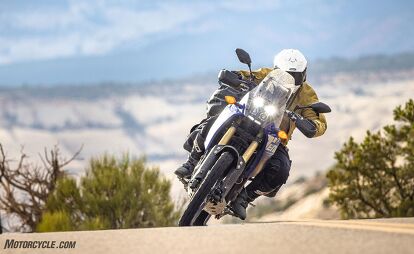


























































































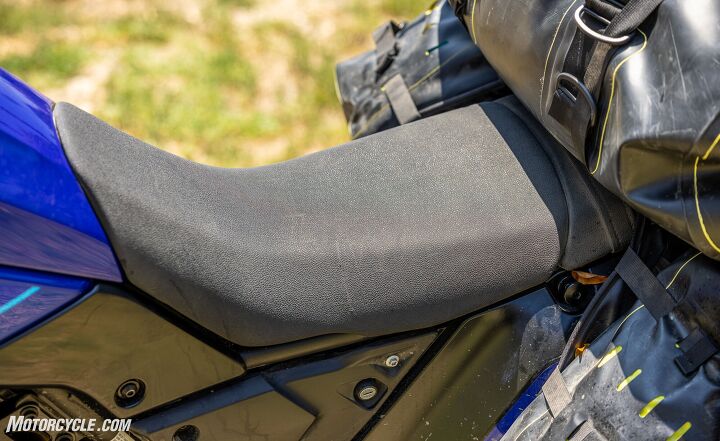


























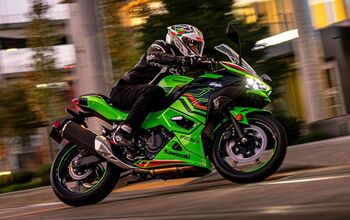







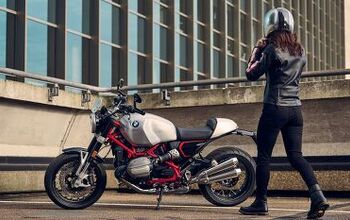
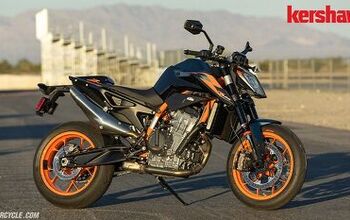
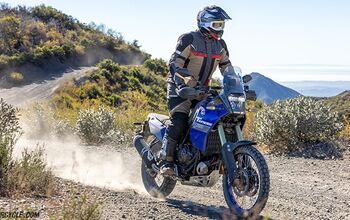
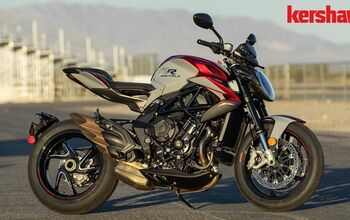


Comments
Join the conversation
Great fun review. However, dealer scarcity (and horror stories) and rumors of unreliability will always put an asterisk behind the Aprilia.
How would the 660 do traveling across 80mph interstates? Buzzy? Likely need a 1t bigger cs sprocket?